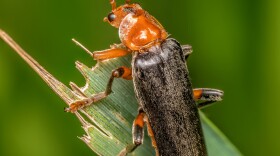There we were, surrounded by the most venomous spiders in North America.
It started as a nice evening, sitting at picnic tables at a barbeque.
But what happened next was … absolutely nothing.
The black widow is the most venomous spider in North America. Their venom is reported to be 15 times stronger than a rattlesnake’s. It’s a neurotoxic venom resulting in violent and prolonged muscle cramping, nausea, and a paralysis of the diaphragm that can make breathing difficult.
There are 3 species of black widows found throughout the United States — the southern, western, and northern black widows. Their appearance will vary depending on species, if it’s a male or female spider, and whether it’s an adult or juvenile.
Adult females are best known for their shiny, black abdomens with the infamous red hourglass on the underside.
Males are half the size of the females and tend to be brown or gray in color with white, yellow or red bands and spots over their backs. While males also have an hourglass shape under their abdomen, it’s usually yellow or white, not red.
Despite their fearsome reputation, black widows seek seclusion, typically spinning their webs in dark, out of the way spaces. Additionally, they are not aggressive, and bite only when significantly disturbed. So, unless you unknowingly smoosh a widow with your hand, foot or other body part, they will do their best to stay away.
The moral of this story from our barbeque: While widows are not out to get you and you’ve likely been closer to one than you would care to realize (like underneath a picnic table), they are spiders that are best appreciated and left alone.





